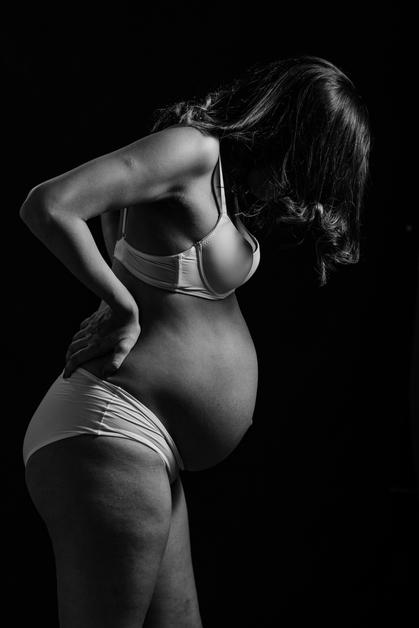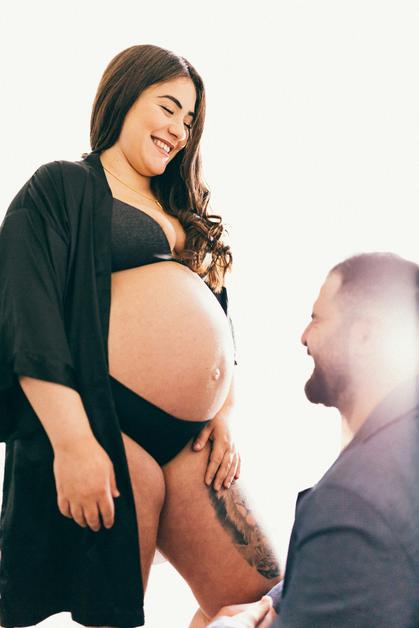You are close to meeting your baby, your bag is almost ready, and then you look up and see that bright disk in the sky. You have heard the stories. Will the maternity unit be overflowing tonight. Will contractions start the moment the moon turns full. Here is the reassuring headline for parents asking about full moon childbirth. Large studies across many years show no reliable surge in spontaneous labor on full moon days, and if a small bump exists, it is so tiny that it does not change care, planning, or safety.
Why parents ask about the full moon
The moon carries story and ceremony, which matters when everything feels charged. Older relatives remember busy nights, friends swap birth stories linked to moonlight, and social media loves a sweeping claim. You want steady facts, not superstition, and you want practical advice you can use if your due date falls near a full moon. If you are wondering whether full moon childbirth will crowd your hospital or nudge your body into labor, you are asking a smart question. The short answer is simple, the moon is beautiful, it is not a labor clock.
How the lunar cycle works
The lunar cycle repeats about every 29.5 days. Full phase happens when the Earth sits between the Sun and the Moon, so the face we see is fully lit. Because the exact full moment can fall late evening or just after midnight, a calendar label may not match the precise peak. That timing detail matters when researchers map births to phases.
Supermoon, micromoon, and tides versus the human body
At perigee, sometimes called a supermoon, the Moon appears about 14 percent larger than at apogee. Its gravity does move oceans. Human scale is different. The gradient of lunar pull across a pregnant abdomen is unimaginably small, many orders of magnitude below the forces that shape uterine physiology. Contractions and cervical change are driven by hormones and receptors in tissue, not by the tide outside.
What the strongest studies show
You deserve numbers that hold up when repeated. The most reliable analyses track many years, many lunar cycles, and hundreds of thousands of births. Their signal is consistent, no clinically meaningful link between moon phase and labor onset or complications.
Large scale findings
Population studies that adjust for day of week and seasons do not show a meaningful pattern. Some analyses detect minuscule differences, like fractions of a percent on specific days, but the effect sizes are so small that care does not change. When you scale the data across locations and years, the pattern washes out.
To frame it with research language that you can still use, investigators who study lunar phase labor timing and lunar cycle labor timing consistently report the same pattern, random variation around the lunar month with no stable spike on the full phase. When analysts calculate birth rates lunar cycle and display confidence intervals, the lines meander, they do not jump on full moon nights.
Small studies and why results vary
A few single hospital time windows show a bump. Why. Small samples are noisy, so random clusters feel meaningful. If a team tests many outcomes, a few pass a significance threshold by luck. Local practice patterns can create artifact peaks, for example, fewer scheduled inductions on weekends, or a holiday shift that happens to land near a full moon. Weather can overlap with the moon on a given week. None of these imply a causal push from lunar light or gravity, they reflect ordinary scheduling or chance.
Statistical versus clinical significance
A difference that is statistically detectable can still be irrelevant for parents. A rise on the order of four tenths of one percent is interesting for statisticians, it is not a reason to change triage plans, staffing, or personal preparation. Your team will care about trends that change decisions at the bedside. This does not.
Stories, symbols, and what they mean
Cultural stories braid the moon with fertility and birth. They offer meaning, comfort, and a memorable frame for family lore. That meaning is real. The physiology is not tied to the phase. A baby born under a bright moon can be a beautiful memory, even if the moon did not start the labor.
What actually starts labor
Labor is not a switch in the sky, it is a cascade inside the body. Understanding that cascade helps you focus on cues that matter.
Maternal fetal hormonal cascade
Toward term, the baby’s adrenal glands increase cortisol. That nudges the placenta to boost prostaglandins, which soften and ripen the cervix. The uterus increases oxytocin receptors and becomes more responsive. Contractions begin to coordinate. Oxytocin release rises through feedback with cervical stretch. This is often summarized as oxytocin and labor onset and prostaglandin induction, plain phrases that point to the core players.
Uterine readiness and maternal contributors
The uterus becomes more sensitive late in pregnancy. Receptor density changes, the cervix remodels, a small amount of inflammation readies tissue, and sleep or stress may tilt timing at the margins. These internal processes dwarf any lunar tug. They are the gears that drive birth.
The proposed moon mechanisms, graded by plausibility
Parents often hear three main ideas. Gravity, melatonin, and weather. Here is what evidence suggests.
Gravitational pull
The lunar gradient across a human body is vanishingly small. It cannot overcome the biochemical triggers of uterine activation. Ocean tides are large because mass and distance are large. Human tissue does not behave like a bay.
Moonlight, melatonin, and circadian biology
What about light at night. In very dark environments, a bright moon may delay sleep a little and trim deep sleep by a few minutes. Melatonin does interact with reproductive hormones, and it shows daily patterns that shift across pregnancy. Researchers describe this as melatonin and labor and circadian rhythm pregnancy hormones. In modern cities, indoor lighting and screens are far brighter than moonlight, so any moon linked shift is diluted. There is no reliable population pattern that ties a specific lunar phase to a distinct hormonal profile or a jump in labor onset.
Weather, barometric pressure, and behavior
Weather systems can change barometric pressure. A few studies try to link drops in pressure to labor timing, but findings are inconsistent and weak. Holidays and weekdays shape scheduled care more than clouds or pressure lines. Local behavior, for example, staffing changes or community travel, can also cluster births without any lunar driver.
Why the myth feels true
Two simple forces make the full moon story sticky.
Scheduling and seasonality
Obstetric schedules matter. Fewer inductions and cesareans on weekends shift numbers by weekday. Holidays change admission patterns. A full moon that lands on a weekend will often be busy for reasons that have nothing to do with moonlight. When researchers separate spontaneous onset from scheduled procedures, and adjust for calendar effects, the moon phase signal fades.
Salience and selective memory
Busy bright nights feel epic and get retold. Quiet nights do not. This availability bias, plus confirmation bias, keeps the story alive in the break room even when the spreadsheet says otherwise.
Practical planning for expectant parents
You can keep your plan simple. If labor starts on a full moon evening, you follow the same cues and call your team the same way. Full moon childbirth does not require a twist in your preparation.
Signs of labor and when to call
- Regular, stronger contractions that return about every five minutes for around one hour, follow your local protocol
- Rupture of membranes, a gush or steady trickle of clear fluid, call for guidance
- Heavy bleeding, fever, severe unusual pain, or a clear decrease in movements, seek urgent assessment
Helpful tip, jot down start time, spacing, and length of contractions. A quick note on your phone works well.
Hospital bag and logistics
- ID and pregnancy records
- Comfortable clothing and underwear, socks
- Basic toiletries and a small towel
- Newborn outfit, hat, and diapers
- Snacks and water, phone charger, earbuds
- Useful numbers, a route plan, parking or transport options
- A contact for sibling care, a plan B for the route
Test your route once, know where to park, and keep a backup plan if traffic is heavy.
Birth plan and stress management
- Note preferred positions, pain relief options, skin to skin, and first feed intentions, one clear page helps your team support you
- Practice calm breathing and visualization, add music or quiet if that settles you
- Ask your partner or support person to anchor the environment and watch the clock while you focus on rhythm
Sleep and mood close to term
Third trimester sleep is a challenge. Reflux, nocturia, fetal acrobatics, busy thoughts, they all show up. A full moon might make your room brighter if your curtains are thin, but simple steps can help. Keep lights low in the hour before bedtime, stretch gently, use pillows for side lying, and talk with your clinician if insomnia or mood changes persist. This is supportive care, not lunar science, and it helps whether or not the sky is bright.
Full moon childbirth will not change these fundamentals. The same safety checks apply any night of the month.
For clinicians and data curious readers
Parents appreciate when care teams align stories with data. If your unit wants to explore the pattern locally, a simple plan can answer the question for your context.
Collecting and mapping data
Define the event you care about, spontaneous labor onset versus all births. Capture date and time of onset and delivery, parity, gestational age, onset type, scheduled procedures, and location. Map each event to precise lunar illumination or phase angle rather than calendar labels, that avoids misclassification when full phase straddles midnight. This helps when you later explore moon phase labor onset and lunar influence on labor.
Analysis tips and visuals
- Compare windows around the full moon, for example plus or minus one to three days, with other days, and adjust for weekday, holidays, and season
- Separate spontaneous births from scheduled procedures in models
- Use regression with appropriate error structures, remember that very large datasets can detect differences that do not matter clinically
- Visualize daily counts across many lunations with confidence bands, the picture tells the story
If you present results, connect back to perinatal safety by checking perinatal outcomes lunar phase and neonatal outcomes lunar phase. For readers who want a broader sweep, point to any meta-analysis lunar phase birth that synthesizes large datasets.
Hospital operations and staffing
Some units staff to their own historical rhythms. That is reasonable if derived from your data. If your records hint at a slightly busier night near full phase, treat it as a planning nudge, not a rule. Always check whether the signal disappears once you control for induction timing lunar phase, weekends, and holidays. The most productive dashboard tracks spontaneous births, inductions, and cesareans by weekday, and aligns staffing with those real drivers. This is where phrases like obstetric outcomes full moon belong, as labels on graphs that usually show no special peak.
How to read media claims
Headlines love a clean hook. A small local spike can turn into a viral claim in hours. Before you share a chart, ask, was the sample tiny. Did the team adjust for weekday and scheduled procedures. Were many comparisons run without proper correction. Has anyone reproduced the effect across multiple years and locations. Clear methods, confidence intervals, and replication are your friends.
References you can discuss with your care team
- Morton Pradhan and colleagues analyzed more than five hundred sixty thousand births in North Carolina from 1997 to 2001 and found no consistent lunar effect on births or complications
- Arliss and colleagues examined a large population dataset and again did not find a reproducible association between lunar phase and birth frequency or complications
- Mohsin reported a single hospital study from Baghdad with limited generalizability, it does not overturn larger multi year datasets
- Schaffir discussed why weather and reporting artifacts are more plausible explanations for apparent spikes than lunar causation
If you enjoy technical language, these papers live in the intersection of lunar phase obstetrics, clinical evidence lunar effect, and calendar epidemiology. For parents, the takeaway remains steady. Full moon childbirth is a story, not a switch.
Putting it together for parents
You might still be thinking, what if my baby decides to arrive under that big silver lantern. Then you will do what parents do every night of the year. You will time contractions, call your unit if any warning signs appear, eat a light snack, and head in when it is time. Full moon childbirth or not, your story will be yours, held by a team focused on your safety and comfort.
Across the article above, you have seen terms like full moon labor and lunar phase delivery timing because search engines and clinicians use them, yet the message is consistent. Full moon childbirth does not alter admission thresholds, monitoring, or postpartum care. If you want to explore credible search terms later, try phrases like lunar phase induction considerations or moon phase birth timing, then look for methods sections that adjust for confounders. That is where the best answers live.
Key takeaways
- Full moon childbirth has strong cultural pull, but large multi year studies do not show a reliable increase in spontaneous labor or complications on full moon days
- If a difference exists, it is tiny and does not change personal planning or hospital operations
- Focus on clinical signs of labor, your comfort measures, and communication with your care team, not the phase of the Moon
- The real drivers of timing are the internal cascade of hormones, especially oxytocin and prostaglandins, along with the readiness of the cervix and uterus
- Use clear safety cues, regular painful contractions, rupture of membranes, heavy bleeding, fever, or reduced movements, and seek care promptly
- For search depth, keywords like moon phase labor onset and lunar phase labor timing can help you find high quality discussions, look for work that reports birth rates lunar cycle with confounder adjustments
- If you want personalized guidance and practical checklists while you wait for your baby, you can download the application Heloa for tailored tips and free health questionnaires for children
- Your care team can walk through any lingering questions. Full moon childbirth can be a poetic detail in your birth story, it is not the deciding factor in when labor begins
Full moon childbirth appears in many conversations because it is memorable. Full moon childbirth appears in older stories passed down in families. Full moon childbirth appears in media headlines that favor drama. Full moon childbirth appears in late night chats between clinicians after a busy shift. Full moon childbirth appears in your mind because anticipation is high near your due date. Full moon childbirth appears often enough that it deserves a simple and steady answer. Full moon childbirth is not a reliable trigger for labor.
Questions Parents Ask
Should I schedule an induction or delivery to avoid or embrace a full moon?
It’s understandable to want a plan when a full moon nears. The evidence does not support scheduling an induction or cesarean because of the lunar phase. Clinical timing should be based on medical indications, your health, and your preferences — not the Moon. In practice, some units have fewer elective procedures on weekends or holidays, which can create apparent clustering around certain dates; that is a scheduling artifact, not a lunar effect. If you’re weighing dates, talk with your clinician about risks, benefits, and logistical factors (travel, support people, recovery) so the decision is medical and practical rather than symbolic.
Can the Moon change pain, contractions, or anxiety during labor?
Many parents worry the Moon might make labor harder. Scientifically, there’s no reliable proof that lunar phase alters uterine contractions or pain thresholds. Indirect effects are more plausible: a bright night might disturb sleep for some people, and poor rest can increase sensitivity to pain and lessen coping reserves. Also, expectations matter — if someone strongly believes the Moon will make labor more intense, anxiety can rise and perception of pain can increase. Reassurance: evidence points to hormonal and physiological drivers (like oxytocin and prostaglandins) as the real determinants of contractions and pain. If you feel anxious, share that with your care team; strategies such as breathing, chosen pain relief, continuous support, and sleep hygiene can help.
Is it safer to avoid travel during a full moon when I’m close to my due date?
There’s no reason to change travel plans solely because of the Moon. The same precautions apply any time you’re near term: know the route to your birth place, allow extra travel time, arrange someone to accompany you if possible, and have a backup plan for childcare or parking. If you have a high-risk pregnancy or your clinician has advised limited travel, follow that medical guidance. Otherwise, plan based on timing, symptoms, and local logistics rather than lunar phase — that will keep you prepared and calm.

Further reading :









